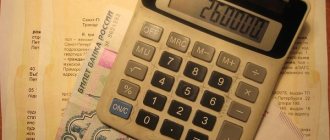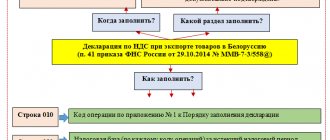From January 1, UPD and invoices can only be issued in the new format
The Federal Tax Service has approved a new format for primary documents, invoices and UPD. All organizations that exchange electronic documents should switch to it.
What's changing
Until January 1, 2021, electronic primary documents, UPD forms and invoices can be created in two formats:
- in the old one, which is enshrined in the order of the Federal Tax Service dated March 24, 2016 No. ММВ-7–15/ (hereinafter referred to as order 155),
- and the new one, which was approved by order of the Federal Tax Service dated December 19, 2018 No. ММВ-7–15/ (hereinafter referred to as order 820).
On January 1, 2021, Order 155 will no longer be in force; it will be possible to create invoices and UPD only in a new format. In the old format, they will not comply with the requirements of the law (clause 1 of Article 169 of the Tax Code of the Russian Federation).
The Federal Tax Service will accept documents in the old format that you submitted before January 1, 2020 until the end of 2022. In 2023, receiving complexes will no longer process electronic invoices and UPD with invoices in the old format. You will only be able to submit a printed form of the document.
Labeling changes
Product codes can be recorded in electronic UPD forms using the new format. For traceable imported products, fields are allocated for the registration number of the product batch and its quantity.
One document can contain either traceable or tagged goods, since the corresponding prefix is indicated in the file name.
Changes related to procurement
The Federal Treasury authorizes all expenses of recipients of budget funds. To track payment for purchases, the documents indicate, in particular, contract information.
In the format according to order 155, this was only the identifier of the government contract (Table 5.9). In the new UPD format, a new block has appeared (Table 5.10), where the date and number of the government contract, the seller’s personal account number, the name of the territorial body of the Federal Treasury and other details are entered.
Changes affecting document processing
It is easier for EDI users and regulatory authorities to work with primary documents in the new format. Transaction participants can agree on the structure of information fields and fill out documents according to this structure. It has become more convenient to reflect the date of provision of services, completion of work or delivery of goods. The characteristics, grade, article and code of the product were placed in separate fields - now the EDI system can automatically process this data.
All format changes and completion requirements are reflected in Order 820.
Step-by-step instructions on how to make a return
To compensate for VAT, you need to prepare a certain package of documents and contact the Federal Tax Service at the place of registration of the company as a tax payer.
Drawing up a declaration
The basis for compensation of VAT expenses is a tax return, which is drawn up in the form approved by order of the Federal Tax Service of the Russian Federation dated October 29, 2014 No. ММВ-7-3/558.
The document consists of a title page, which contains information about the payer, and sections that include data on various areas of the payer’s activities.
The payer is responsible for the accuracy and completeness of the information. To avoid problems when preparing a declaration and to have legal grounds for claiming a VAT refund, you need to regularly and correctly keep records of invoices. Their presence is the basis for the legality of VAT calculation.
The tax return is a standard form that contains the necessary sections and wording. They cannot be adjusted. All data in the document is displayed in the form of numbers.
Submission of documents
The declaration is sent through the user’s personal account on the Federal Tax Service website. Documents confirming the validity of the application must be attached to the declaration. If you buy a car, these will be:
- contract of sale;
- vehicle acceptance certificate;
- Receipt of payment.
The declaration must be submitted by April 30 of the year following the reporting year - the one in which the vehicle was purchased.
Desk verification of documentation
The submitted documentation is subject to detailed analysis by the Federal Tax Service . It is carried out within two months from the moment of application (Article 88 of the Tax Code of the Russian Federation). During the audit process, the tax authority may request additional information. All documents are sent electronically. If, as a result of the inspection, violations were revealed, the Federal Tax Service authority will be required to notify the applicant in writing or electronically within 10 days after the inspection.
Making a payment decision
The decision on VAT compensation is made by the Federal Tax Service within 7 days after the inspection (clause 2, article 176 of the Tax Code of the Russian Federation). The payer must be properly informed about the results of consideration of the application. The notification must be received by the interested party within 5 days from the end of the inspection.
Tax refund
Compensation for VAT is paid by the treasury authority. The basis for payment is the decision of the Federal Tax Service. The funds must be transferred to the payer’s account within 5 days from the moment the Treasury receives the specified decision with simultaneous notification of the Federal Tax Service (clause 8, article 176 of the Tax Code of the Russian Federation).
In case of violation of the deadlines, penalties will be applied to the guilty person. They are expressed in the accrual of interest on the principal amount, based on the size of the refinancing rate of the Central Bank of the Russian Federation. Accrual begins on the 12th day after completion of the desk audit.
Sample of filling out an invoice in 2021
In order to correctly fill out the invoice in 2021, take the information from the primary shipping documents - invoices, acts. If there was an advance payment, payment details will be required for line 5 (Letter of the Ministry of Finance dated 02/06/2018 N 03–07-14/6704).
You can fill out the invoice form in 2021 with a VAT rate of 20 percent:
The rules by which invoices must be filled out in 2021 are given in Government Decree No. 1137 dated December 26, 2011. These rules also did not change in any way in 2021 (this is logical, because the invoice form itself has not undergone amendments). At the same time, we recall that the Tax Code of the Russian Federation has established a number of mandatory requirements for the preparation of invoices. They are contained in paragraphs 5, 5.1, 6 of Art. 169 of the Tax Code of the Russian Federation.
Here is the general approach and rules for filling out invoices in 2020:
- Fill in the lines about the consignor and consignee when shipping goods; put dashes in invoices for work or services. If the shipper is a seller, write “He” on line 3;
- The government contract identifier is needed only for shipments under government orders.
- a product type code is needed when exporting to the EAEU - select it from the HS reference book;
- Take the code and designation of the unit of measurement from Sect. 1 or 2 OKEYS, for example, “796” and “pcs”. If there is no price per unit in the contract or your units of measurement are not in these sections of OKEI, put dashes in columns 2, 2a, 3 and 4.
- the registration number of the customs declaration, the name and code of the country from OKSM is indicated by the importer of the goods. If you resell the goods, column 11 does not need to be filled in.
- number invoices in chronological order. However, violation of the numbering is not critical - it does not deprive the buyer of the right to deduction (Letter of the Ministry of Finance dated January 12, 2017 N 03–07-09/411).
- The invoice is signed by the director and chief accountant or other employees authorized by order or power of attorney (clause 6 of article 169 of the Tax Code of the Russian Federation).
An invoice is a document on the basis of which the buyer can accept for deduction the amount of VAT presented by the seller of goods (works, services), property rights (clause 1 of Article 169 of the Tax Code of the Russian Federation). This is the main purpose of the invoice, so it plays a big role for VAT payers.
Having received from the seller a correctly drawn up invoice, in which there are no errors that would prevent the tax authorities from accurately identifying the seller, the buyer, the name of the goods (work, services), their cost, the tax rate, the amount of tax charged to the buyer, the latter will have the right to accept the amount indicated in the invoice. invoice the amount of VAT to be deducted or include the tax in the cost of purchased goods, works, services (clause 2 of Article 169 of the Tax Code of the Russian Federation). Provided that there are also documents confirming their acceptance for registration, for example, a delivery note or an act (clause 1 of Article 172 of the Tax Code of the Russian Federation).
If the buyer receives an incorrect invoice from the seller, you have the right to ask the seller to make appropriate corrections.
Sample invoice for goods in 2021
Sample invoice for advance payment in 2021
Sample invoice for services in 2021
Please note that one person can sign the invoice for the director and chief accountant. To grant him such powers, it is enough for the director to issue one order or issue one power of attorney. This was confirmed by the Ministry of Finance in a recent clarification (letter dated July 24, 2019 No. 03–07-11/55067).
The Tax Code does not require that invoices be signed exclusively by the director and chief accountant of the company. These may be other persons whom the director authorized by order or power of attorney (clause 6 of Article 169 of the Tax Code).
It is not necessary for one person to sign for the director and another for the chief accountant. You can issue one general power of attorney for the right to sign invoices for both the manager and the chief accountant. Give it, for example, to the manager so that the director does not waste time signing documents. Instead of a power of attorney, you can draw up an order.
Warn the manager to put not one, but two signatures - both with a transcript. Additionally, let him indicate the number and date of the power of attorney or order. Then counterparties will not have any unnecessary questions regarding the preparation of documents.
Has the manager gone on vacation? No problem. Transfer the right to sign invoices to another employee.
invoices 2020
Download
About VAT deduction by the buyer
Can a new creditor who has acquired the right of claim under a sales agreement claim VAT on this transaction as a deduction? When you first look at the situation, a negative answer comes to mind. Indeed, paragraph 1 of Article 172 of the Tax Code of the Russian Federation states that the buyer can only deduct the VAT amounts presented to him by the seller. What amounts are considered to be presented? Based on paragraph 1 of Article 168 of the Tax Code of the Russian Federation, these are amounts that the seller charges in addition to the cost of goods, works, services or property rights sold. In addition, the amounts presented include the amount of VAT calculated on the advance received.
It turns out that VAT incurred by the seller of the rights of claim under the sales agreement is not considered to be claimed. In general, of all the cases listed in paragraph 4 of Article 164 of the Tax Code of the Russian Federation, only VAT calculated on the prepayment is considered to be presented. Based on these considerations, the subsequent acquirer of property rights will not be able to deduct VAT on them.
The Ministry of Finance is talking about the same thing. In particular, the letter dated 02.17.10 No. 03-07-08/40 confirms that the new creditor cannot deduct the VAT incurred by the original creditor.
However, the opinion of the financial department is not a normative legal act, and, as practice shows, it is often successfully challenged by taxpayers. Let us turn to the rules for maintaining a purchase book, which were approved by Decree of the Government of the Russian Federation dated December 26, 2011 No. 1137. Clause 18 of these rules contains a list of cases that are accompanied by the preparation of an invoice in a single copy. It is understood that in these transactions the buyer does not receive an invoice and cannot deduct VAT. This list contains transactions from Article 162 of the Tax Code of the Russian Federation, but operations on the assignment of property rights (Article 155 of the Tax Code of the Russian Federation) are not included in it. There are also no other transactions in which VAT is calculated on the difference between the sales and acquisition prices using a calculated rate, namely:
- sale of property subject to accounting at cost, taking into account the tax paid (clause 3 of Article 154 of the Tax Code of the Russian Federation);
- sales of agricultural products purchased from individuals (clause 4 of Article 154 of the Tax Code of the Russian Federation);
- sales of cars purchased from individuals (clause 5.1 of Article 154 of the Tax Code of the Russian Federation).
Thus, despite the fact that in these cases the seller does not formally present to the buyer the VAT calculated at the estimated rate, it is regarded as presented for the purposes of applying a tax deduction.
But VAT on transactions named in Article 162 of the Tax Code of the Russian Federation cannot be considered presented. The fact is that in these operations, VAT is not directly revenue and does not form, but only increases, the tax base.
Conclusion
Based on the above, when assigning rights of claim, the seller calculates VAT from the inter-price difference at a rate of 18% / 118% and draws up an invoice in duplicate. The buyer of rights, on the basis of his copy of the invoice, accepts VAT for deduction.
When is the document used?
An invoice is a document that serves as the basis for the tax authority to accept the buyer for deduction of VAT presented by the seller. When selling goods, providing services, performing work or transferring property rights, sellers charge VAT by issuing an invoice (what is an invoice for?).
Invoices are registered in the Journal of issued and received invoices (books of purchases and sales), and the displayed VAT amounts are subsequently taken into account in tax returns, and at the end of the reporting period, based on the entries made, the amount of tax payable to the budget is calculated.
Why is the VAT amount in the invoice ≠ the VAT amount in the contract?
The fact is that when receiving property, the bank can take into account input tax in two ways, depending on the purposes for which this property was acquired.
- the property was specifically acquired for banking activities, then VAT is included in income tax expenses;
- the property is intended to be sold and it will not be used in banking operations or rented out, then VAT is taken into account in the cost of this property (including fixed assets). By the way, according to the Ministry of Finance, VAT can be taken into account in the cost of property only on the basis of an invoice received from the seller, that is, only when purchasing property from an organization or individual entrepreneur that applies the general taxation regime.
We wrote about other situations when property included in VAT is sold: 2013, No. 9, p.
63 The procedure for calculating VAT by the bank in the event of further sale of property also depends on the procedure for accounting for input tax. When selling property, the input tax on which was included in tax expenses on profit, the bank charges VAT on its value at a rate of 18% or 10% and transfers the entire tax amount on the transaction to the budget. And when selling property recorded at cost with tax, the bank must calculate VAT on the inter-price difference. Let us remind you that the inter-price difference is understood as the difference between the sale price of the property with tax and the value of the property taking into account the overvaluation. It is clear that the collateral property was received not for conducting banking operations, but for further sale, that is, it is taken into account by the bank with VAT. This means that during implementation the base is determined as the inter-price difference, and VAT is charged at the calculated rate or Note that, most likely, the delta will be very small or even zero.
This is what the invoice you will receive from the bank when concluding such a transaction will look like.
/ condition / The cost of the car including VAT, at which it is accepted for accounting by the bank, is RUB 1,500,000. Sale price - RUB 1,570,000. The tax base for VAT is RUB 70,000. (RUB 1,570,000 – RUB 1,500,000). The amount of VAT charged to the buyer is RUB 10,677.97. (RUB 70,000 x
/ solution / The invoice issued to the buyer by the bank is drawn up as follows (only the columns necessary for the example are given).
| Name (description of work performed, services provided), property right | Unit | Quantity (volume) | Price (tariff) per unit of measurement | Cost of goods (works, services), property rights without tax - total | Tax rate | Tax amount due to buyer | Cost of goods (works, services), property rights with tax - total | |
| code | symbol (national) | |||||||
| 1 | 2 | 2a | 3 | 4 | 5 | 7 | 8 | 9 |
| Automobile | 796 | PC. | 1 | — | 70 000 | (interprice difference) | 10 677,97 | 1 570 000 |
It was the amount of VAT indicated in the invoice that the bank should have previously specified in the purchase and sale agreement. But, as follows from judicial practice and questions from our readers, banks often specify VAT in the agreement, accrued at a rate of 18% on the full value of the property. And then they issue an invoice, which indicates the correct VAT, calculated from the inter-price difference. That is, the bank could easily indicate VAT in the amount of RUB 239,491.53 in the agreement. (RUB 1,570,000 x The difference is quite large - RUB 228,813.56 (RUB 239,491.53 - RUB 10,677.97).
Irina, chief accountant, Novosibirsk region.
As a matter of fact, the judges also spoke out about the illegality of such bank actions. They considered a dispute in which the bank indicated in the invoice VAT calculated at the rate (from the inter-price difference), and in the agreement with the buyer - tax calculated at the rate of 18% of the full cost , as in the sale of real estate accounted for without the Judge deciding that the amount of VAT received by the bank in excess of that which the seller should have presented to the buyer based on a special procedure for calculating tax is unjust enrichment and must be returned to the buyer. In addition, by issuing an invoice to the buyer in which the amount of VAT is indicated in a smaller amount compared to the contract, the seller deprives the buyer of the opportunity to claim a deduction for the difference between the VAT in the contract and in the invoice.
It would seem that everything is clear. But apparently, not all banks are familiar with the verdict of YOU. Therefore, such disputes arise again and again. Of course, there is only one way out - to go to court with a claim for the return of VAT received by the bank unjustifiably. There is every chance of a positive decision. In particular, the courts note that by acting according to this scheme, the bank has the opportunity to illegally obtain from the buyer an amount of VAT in excess of that indicated in the invoice and at the same time does not transfer this money to the budget. That is, the fact of unjust enrichment of the seller is obvious.
It is best to find out at the stage of signing an agreement with the bank how it will calculate VAT. If the bank sells property received under a compensation agreement or under a pledge agreement, check at what value - with or without tax - the bank's property is recorded and what amount of VAT will be indicated in the invoice. Keep in mind: there are known cases when the bank indicated VAT calculated in the usual manner both in the contract and in the invoice issued to the buyer. And at the request of the Federal Tax Service, upon counter-check, he presented the tax authorities with an invoice with the tax calculated from the inter-price difference. Of course, the deduction was provided to the buyer only for this amount
In what cases is an invoice not needed?
There are situations when issuing an invoice is not necessary, and the transaction is confirmed by other documents: an invoice for payment, invoices, etc. You don’t have to worry about an invoice if:
- the transaction is not subject to VAT (Articles 149, 169 of the Tax Code of the Russian Federation);
- the enterprise sells goods to individuals at retail for “cash” (for such transactions, a strict reporting form or a receipt from the cash register is sufficient);
- entrepreneurs are under special tax regimes (simplified taxation, imputation, unified agricultural tax, have a patent);
- a legal entity gives the goods to its employee free of charge (based on letter of the Ministry of Finance of the Russian Federation dated February 8, 2021 No. 03–07-09/6171);
- delivery of goods is planned, and an advance has been received for it (in this case, this product is produced no longer than six months, or the buyer does not pay VAT, or the transaction has a zero rate for this tax, for example, the product is being exported).










